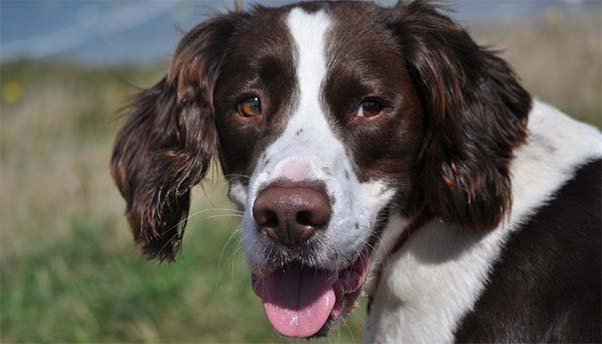GOOD OR BAD? WHAT YOU NEED TO KNOW ABOUT ESSENTIAL OILS

In recent years, essential oils have gained popularity with many of us for their variety of uses, including scenting our homes for relaxation and stress relief, cleaning products and natural remedies for various ailments.
So, while essential oils can offer various benefits to humans, they can pose risks to our four-legged friends. The high concentration of certain compounds in essential oils can be toxic to pets, leading to adverse reactions and health issues. It's essential to use them with caution. Don’t worry though, there are lots of essential oils that are not only safe for your dog, they can have many therapeutic benefits for them too!
What are Essential Oils?
Essential oils are concentrated organic compounds made by plants; they give plants their unique smell and taste. They are extracted from various parts of plants, such as the flowers, leaves, bark, stems, roots, nuts and seeds. These oils can be mixed with other ingredients or sold as 100% (concentrated) essential oils.
Because they’re derived from plants, many people think of them as being ‘natural’ and therefore safe, but when used around our pets it might not be as straightforward as we think, and here’s why we need to be a bit cautious when our pets are in the mix.
Risks and Concerns
Dogs have an exceptional sense of smell. While us humans have approximately 6 million nose-nerves, a dog may have up to 100 million! So, as you can imagine, essential oils can feel extremely intense for our canine companions.
Before looking at the list of safe essential oils for dogs, it's important to understand the potential dangers associated with these oils when they’re not used properly.
· Skin Irritation: Most essential oils can cause skin irritation, and in some cases, allergic reactions, if applied directly. It is therefore not advisable to apply any essential oil directly to your dog’s coat or skin.
· Ingestion: Ingesting essential oils can be harmful or even fatal to your dog so ensure that you keep them out of reach and don’t use them on any surface that your dog may wish to lick!
· Respiratory Issues: Inhalation of strong essential oil aromas can irritate your dog’s respiratory system, so take care and watch for any signs of distress.
List Of Essential Oils to Avoid for Dogs (and Cats)
Certain essential oils are toxic to both dogs and cats and should be avoided entirely. These include:
· Tea Tree Oil
· Peppermint Oil
· Eucalyptus Oil
· Pine Oil
· Wintergreen
· Cinnamon Oil
· Ylang Ylang
· Clove
· Juniper
· Thyme
· Citrus (d-limonene)
· Pennyroyal
· Sweet birch
· Anise
· Yarrow
· Garlic
· Hyssop
The most dangerous essential oil for dogs is tea tree oil, which can cause toxicity of the central nervous system, drooling and other issues.
Symptoms of Essential Oil Poisoning
Essential oil poisoning in dogs can manifest in various symptoms, and the severity of the reaction can depend on factors such as the type of essential oil and the amount ingested or inhaled. Here are some common symptoms of essential oil poisoning in dogs:
· Gastrointestinal Issues: Vomiting, diarrhoea, drooling or salivation
· Respiratory Distress: Coughing, wheezing or difficulty breathing
· Skin Irritation: Redness, rash or swelling
· Neurological Symptoms: Lethargy, weakness, tremors or seizures
· Behavioural Changes: Agitation, depression, or disorientation
· Other Signs: Changes in heart rate, low body temperature, liver or kidney failure (in severe cases)
It's important to note that different essential oils have varying levels of toxicity for dogs, and some oils are more dangerous than others. Citrus oils, tea tree oil, pine oil, and certain oils containing phenols can be particularly problematic for our four-legged friends.
If you suspect your dog has been exposed to or ingested essential oils and is displaying any of these symptoms, seek immediate support from their healthcare provider. Quick action is essential to minimise the potential harm to your dog’s health. Always store essential oils out of reach of your dog.
How to Safely Use Essential Oils Around Your Dog
To safely enjoy the benefits of essential oils while keeping your dog happy and healthy:
· Dilute Properly: Always dilute essential oils with a carrier oil before use.
· Supervise: Keep a close eye on your dog when using essential oils. If you notice any adverse reactions, stop use immediately.
· Consult your dog’s healthcare provider: If you have any doubts or specific concerns.
· Use Alternatives: Consider alternatives like diffusers or topical application to minimise direct exposure to your dog.
Essential Oils That are Good for dogs
Now, onto the good stuff – essential oils that get the furry seal of approval!
Here's a list of essential oils that are generally safe for your dog when used appropriately. Always dilute these oils and use them sparingly.
· Lavender - known for its calming properties; can help reduce anxiety.
· Chamomile - gentle and can be used to soothe skin irritations and anxiety.
· Frankincense - can help with inflammation and stress.
· Cedarwood - may help repel fleas and ticks.
· Ginger - can aid in digestion and alleviate motion sickness.
· Cardamom - may help with digestion.
· Carrot Seed - can be beneficial for skin health.
· Helichrysum - known for its wound-healing properties.
· Myrrh - can be used for oral health and skin issues.
· Ginger - can aid in digestion and alleviate motion sickness.
· Valerian - may help calm anxious dogs.
· Turmeric
· Geranium
· Sage
· Bergamot
· Citronella
· Rosemary
It’s important to note that while these oils are generally safe for dogs, you should make sure to check with the business you are buying from and consult with your dog’s healthcare provider if they have any pre-existing health conditions.
And a note of caution; every dog is different, and what is tolerated by one, might not sit well with another. A 2022 study of canine smell preferences*, among a small group of dogs, found that they were “more likely to interact with the scents of blueberry, blackberry, mint, rose, lavender and linalool, so it can be assumed that these smells were not unpleasant for them”.
Remember that even with the safe oils, a drop or two can go a long way, so moderation is the key to keeping tails wagging and noses happy!
And finally, here is the golden rule: never put any essential oil product directly on to your dog's fur or skin or allow them to ingest.
References:
*https://pmc.ncbi.nlm.nih.gov/articles/PMC9219509/
https://tyleraromatherapy.co.uk/
https://www.petmd.com/dog/general-health/are-essential-oils-safe-for-dogs
https://abbeyessentials.co.uk/blogs/news/which-essential-oils-are-safe-to-use-around-dogs












